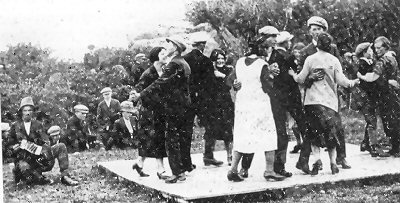‘The wakes and funerals of the Irish,’ wrote Rev Nelson in his History of Creggan Parish (1840), ‘are no less interesting. On death the corpse is carefully washed over and, if an adult, dressed in the usual manner. It is placed under board, as it is called, that is, on a long table (often provided by the funeral undertakers who keep one for the purpose) about six foot long and two foot wide but when this cannot be got, two small tables pushed together and draped with a white sheet. The corpse too is covered in a white sheet as is the wall at its head. To the latter are attached great quantities of emblematic pictures of crucifixion, resurrection etc. The table under which the corpse is laid is covered with candlesticks varying in number according to the circumstances and respectability of the deceased. The number is always odd and varies from three to thirteen.
The Rhymers or Keeners, mostly women, are sent for from a considerable distance to perform the funeral rites. Arriving at the house they partake of some refreshment and a glass of whiskey (Are these things different? Ed) then the females are arranged into two divisions, one on each side of the corpse. One of the Keeners then begins her lamentation in Irish, expressing some of either the good or the bad qualities of the deceased, or a number of foolish rhetorical questions such as, ‘Why did you die?’ or ‘Did you not like the world?’ The Keenagh or cry then goes up and all join in. The Rhymers on the other side then begins her lament and is joined in like manner by the rest, the one praising, the other disparaging the corpse.
